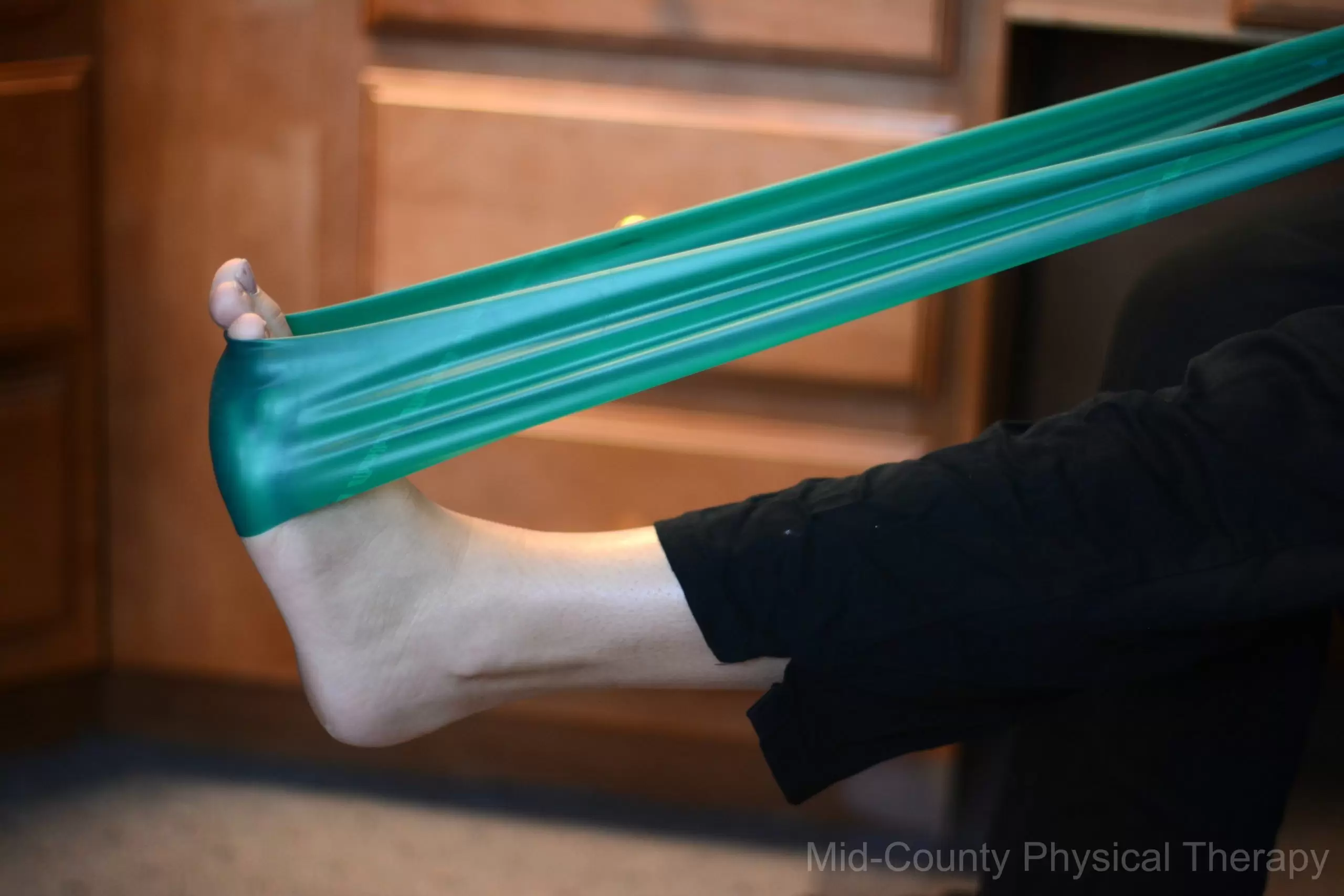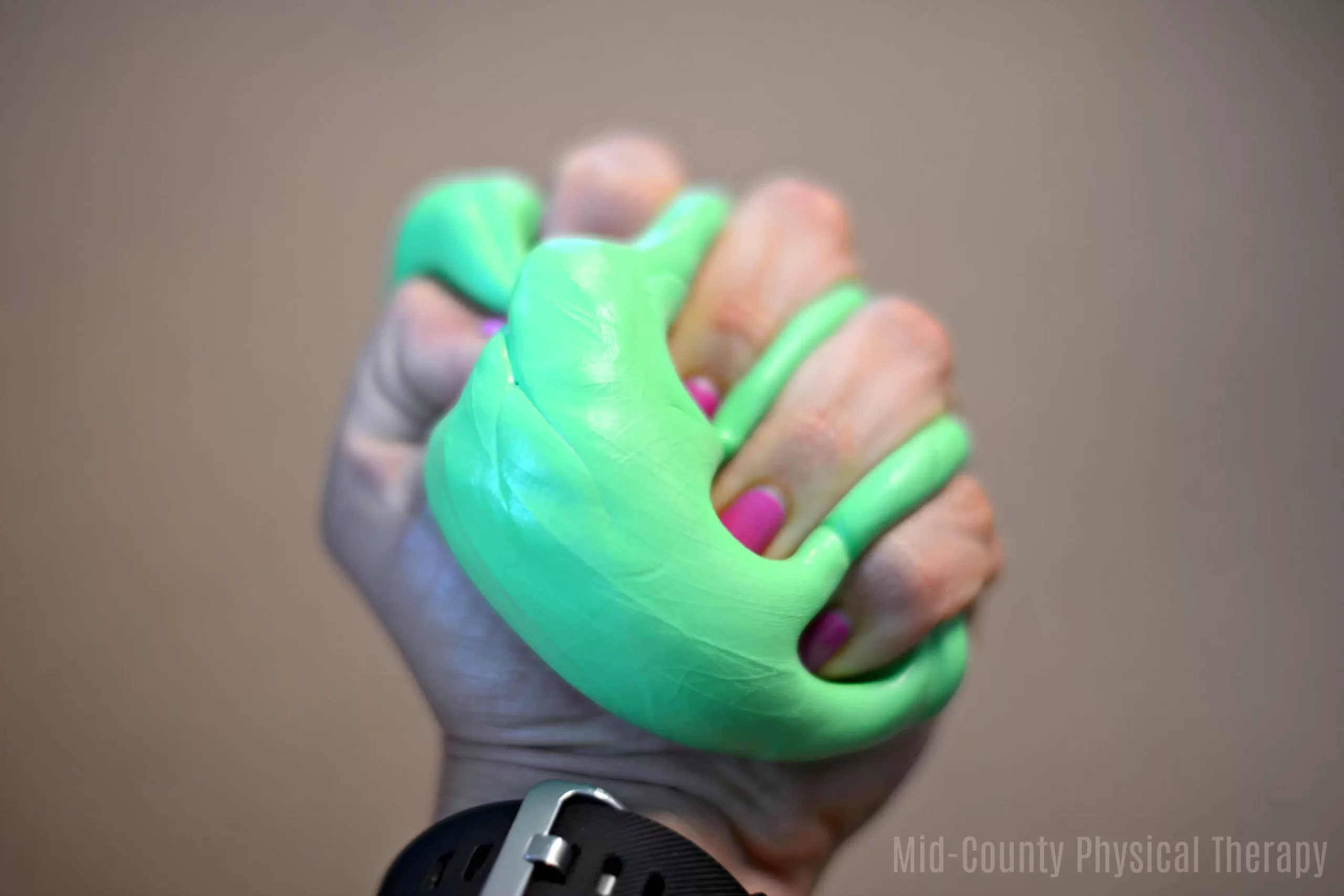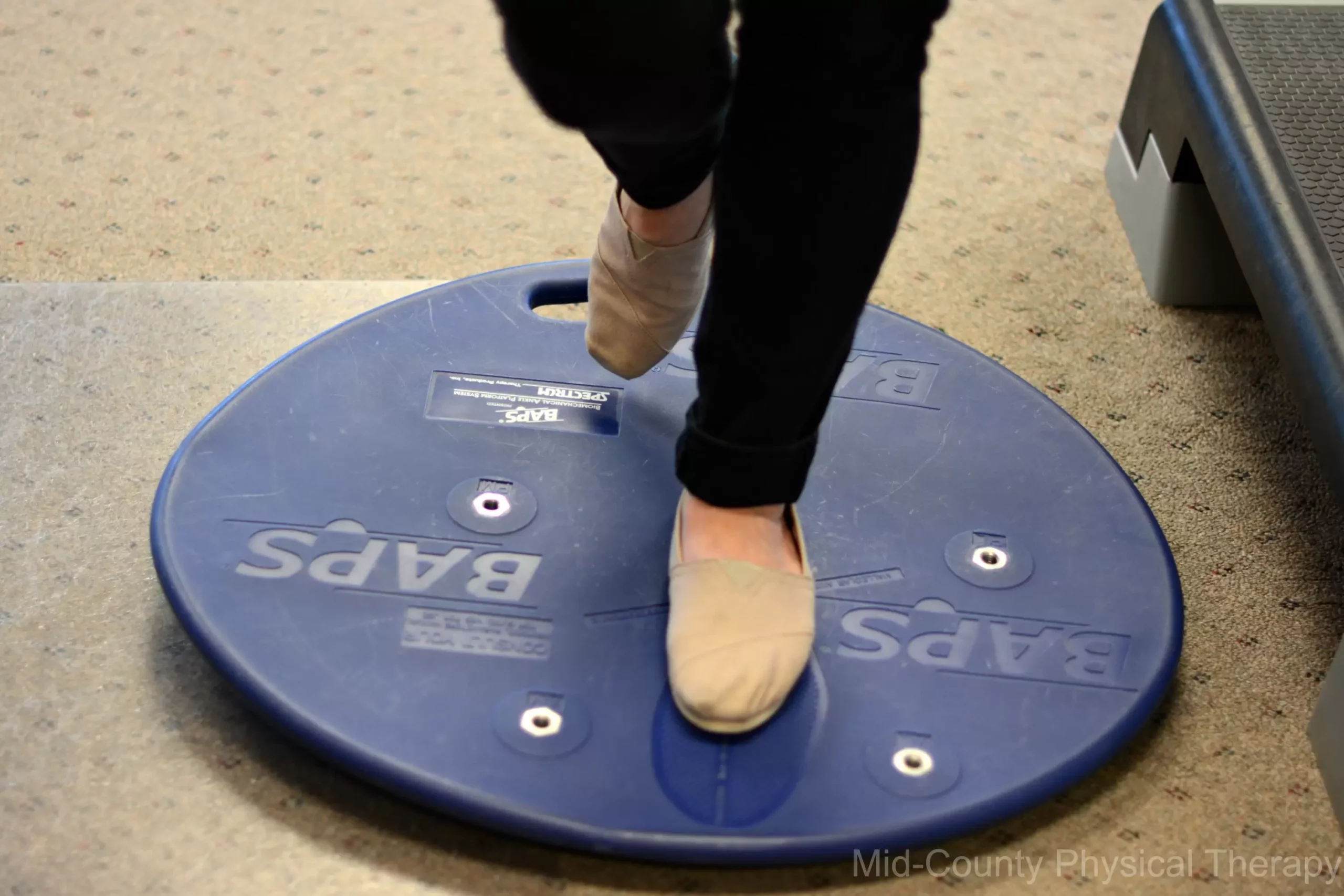Physical therapists prescribe a lot of exercises for unique injuries and strengthening programs. These exercises oftentimes require certain tools that sit around the clinic waiting for their turn to play. You might be wondering what some of those spectacular tools are and what physical therapists use them for in rehab programs. This list gives you a glimpse at several of them and a little bit about them. Check it out!
Resistance Bands
Resistance bands are the banana of the active-world. Just like bananas, resistance bands are low-weight, salubrious, travel well, and are a perfect on-the-go choice. Commonly seen in the strength training and physical therapy setting, resistance bands provide low-impact, versatile exercises for every muscle group on the body. Each color represents a different resistance, with the darker-colored bands providing the most intensity. The physical therapist will prescribe strengthening plans with these bands to help improve strength, posture, coordination and even help individuals progress in their flexibility. They really do it all. I would not be surprised to find out that these bands were related to Machete’s Elastic Wonder, (SpyKids, anyone?) and had 999 uses. The key is for us to figure out what they are. Find more resistance band exercises.

Pulleys
Anyone whose shoulder needed TLC in the PT clinic knows of the coveted pulleys. This simple machine provides an active assist to encourage more range of motion in the injured shoulder. Along with advancing a patient’s range of motion, the pulleys assist with pain management. The physical therapist prescribes these exercises to patients recovering from shoulder injuries and even some neck and back injuries. When the individual pulls the joint into different stretches such as flexion and abduction, they guarantee more for their active future. Flexibility and stretching are preeminent in rehabilitation, especially if the patient desires to surpass their previous physical abilities. The pulleys do not attach to any objects other than the patient’s hands, but when I think about all that work they do to slide the rope up and down, it could be the solution to the world’s energy problems. What if every time a patient used the pulleys, it secretly powered our clinic?
Putty
The adult’s Play Doh. This rehab tool might look familiar if you needed hand therapy. The putty improves grip strength, movement, and dexterity. Fractures, sprains, and even strokes affect the hands, which can range in severity. If a patient wants to regain use of these important tools, they will want to start and continue hand-exercises as regularly as possible. Luckily, the putty offers an exercise that a patient can do while watching TV, or sitting at their desk at work, which makes it easy to travel with and a low burden on space. Like the resistance bands, the darker the color, the higher the resistance of the putty. The putty can be squished, spread, and molded by the fingers and palm to provide focused and challenging exercises. Putty exercises may look like a simple task, when in fact it can be quite the opposite since hand muscles are not regularly tested. If you use this putty, you are about to give the sickest handshakes ever. Warn your friends. Find more putty exercises.
BOSU Ball
Half floor, half ball, it can do it all. The name, standing for BOTH SIDES UTILIZED, refers to the flat surface and the hemisphere surface. Physical therapists apply the tool to programs that target balance and core strength. Physical therapists understand that a lot of rehabilitation starts at the core muscles. The unstable surface recruits the core muscles to participate in movements that would otherwise focus on other large-muscle groups in the extremities. Injuries such as poor posture, rotator cuff strains, and neck problems often stem from imbalances in the abdominal muscles. When the patient completes exercises on the BOSU they have a higher likelihood of recovery and pain management. If you have never used this tool before, please be sure to try it in a controlled setting with a professional nearby. The unsteady surface could cause more problems than solutions if not utilized properly. Now, go show your physical therapist or your strength-trainer your newfound knowledge on the BOSU ball. See if they even know what BOSU stands for and then “wow” them with your answer. Find more BOSU exercises.

BAPS Board
Last but not least, this weirdly shaped board. “BAPS” stands for “Biomechanical Ankle Platform System,” and it conditions the lower limbs at the ankles. The large board balances on a hemisphere that can move to different spots to encourage pain management and proprioception. By allowing certain ankle-movements and weight-bearing options, this tool conditions the ankle to increase the strength at plantarflexion, dorsiflexion, inversion, etc., and can strengthen the ankle depending on where the physical therapist places the fulcrum. The demand on balance and strength mixes into a program that can help the patient return from injuries such as strains, fractures, and neuropathy. As the board challenges the proprioceptors in the ankles, the body’s sense of strength and awareness improves and can prevent future injuries to the area. You can also tell your physical therapist that you know what BAPS stands for and just “wow” them again. Find exercises here.
Follow any exercise plan under a physical therapist or physician’s guidance and care. These exercises are not for everyone, and injuries require individual assessment to determine if they are right for you.
If you have any more questions, feel free to contact us, Mid-County Physical Therapy!



